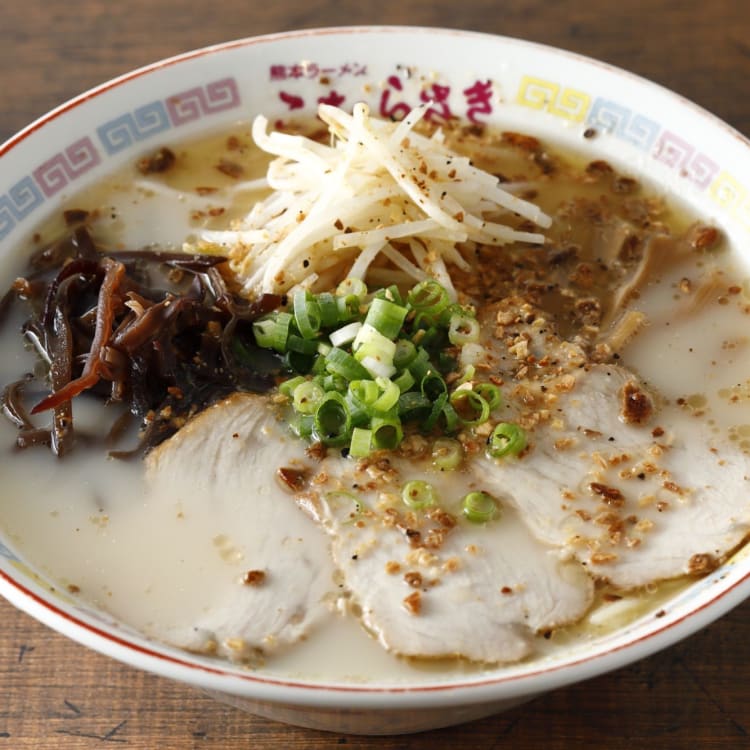
How to enjoy ramen like a local Get the lowdown on this internationally adored dish
There are few Japanese dishes more internationally adored than ramen. A big comforting ladle of hot soup, al dente egg noodles, and succulent toppings created with the perfect balance of flavour and textures; it’s a delicious culinary hug. Here, self-proclaimed ramen enthusiast and Time Out Tokyo Deputy Editor (English), Kit Kriewaldt, uncovers how to enjoy ramen like a local.
Ramen is extremely nuanced and varied in Japan. It’s rooted in Chinese cuisine and Japanese history, and how it’s served differs from region to region, and even chef to chef. Here’s what to know when chowing down on ramen during a visit to Japan.
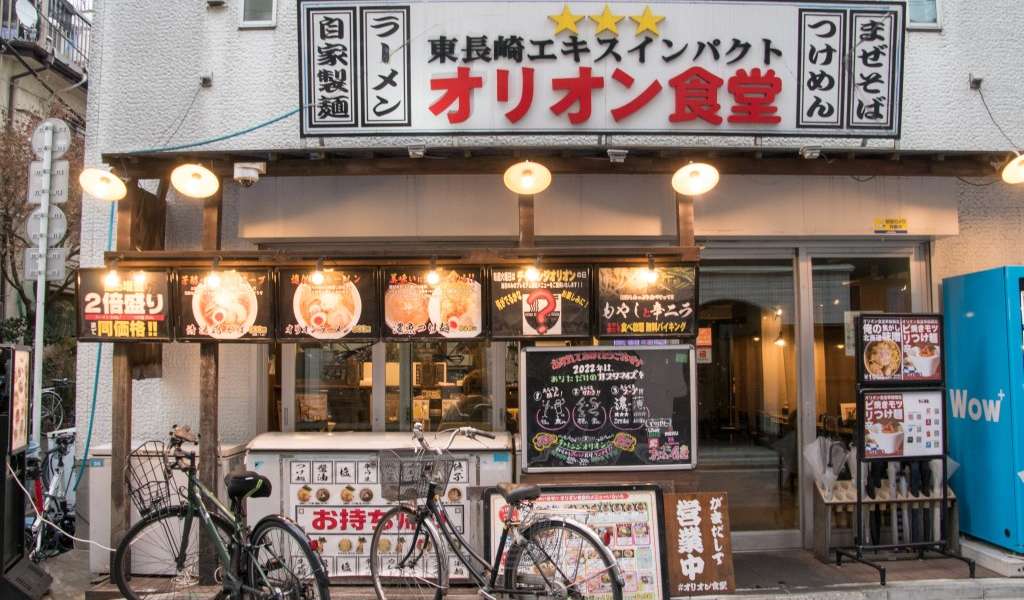
Ramen shop Orion Shokudo in Tokyo
Can you tell us about the various types of ramen in Japan?
As a brief explanation, the ramen you eat is differentiated based on how its soup is made. Ramen soup is comprised of 3 basic elements: soup stock (chintan or paitan), sauce (soy sauce, salt, miso, etc.) and oil. The soup is made with a combination of stock and sauce. Then, there are variations based on the noodles and toppings used. (These are of course defined by the region the specific ramen is from and the chef that’s making it.) So, if you were to Google ‘how many types of ramen are there?’, it would appear there are infinite possibilities.
Paitan is a cloudy stock made by boiling ingredients such as pork or chicken bones over high heat, while chintan is a clear stock made by boiling ingredients over a low heat, which leaves a cleaner aftertaste. Other ingredients used to make stock include fish such as bonito, sardines and mackerel, but also kombu seaweed and scallops. And then there are plenty of vegetables used too, including but not limited to onion, garlic and ginger.
Some of the more common types of ramen are shoyu ramen (made with soy sauce in the base), miso ramen (a mix of stock, miso paste and other spices and seasonings), shio ramen (a clear broth which is light and seasoned with salt) and finally tonkotsu ramen which is a classic paitan broth that’s cloudy and quite thick.
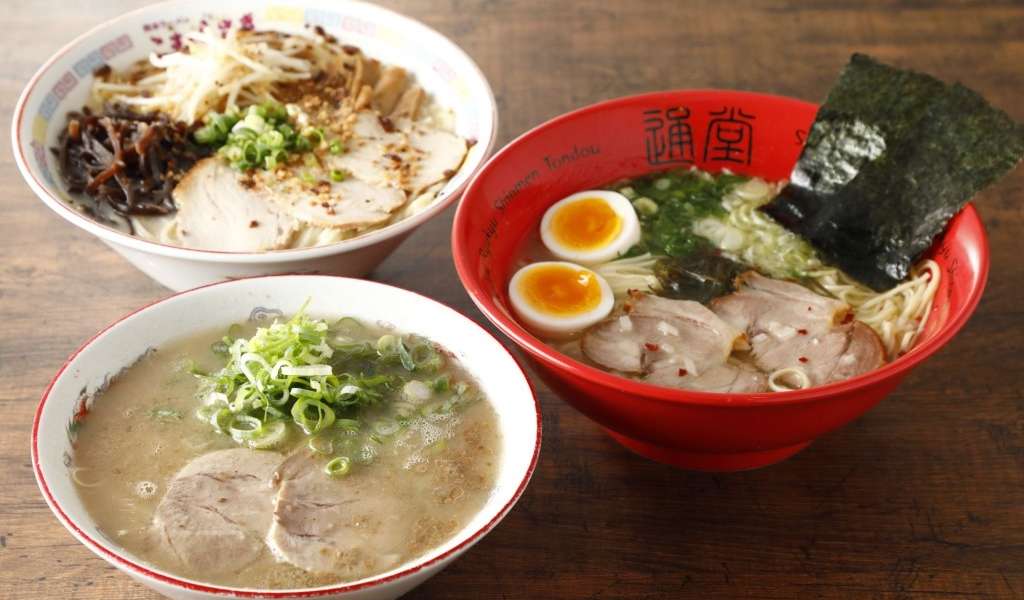
Assortment of ramen from Shin-Yokohama Raumen Museum
Let’s talk more about some of the unique regional specialities. What would you recommend international travellers try?
I would recommend the ‘stamina ramen’ in Ibaraki Prefecture - I used to live there, and the region is particularly renowned for its fresh produce. While the ‘stamina ramen’ is not unique to Ibaraki (you can find it in other prefectures too), I particularly like the one served in Ibaraki. It’s made using a tonkotsu soup that’s been thickened with bean paste to make it more filling (hence the name stamina – it’ll give you stamina for the day, but you also need stamina to finish it). Then, it’s topped with veggies like cabbage, bean sprouts, green onions and spices. It’s tasty and huge!
But the ramen from Sapporo, in Hokkaido Prefecture, is probably the most famous regional specialty. It’s made using a tonkotsu base that’s been strongly flavoured with miso and has butter and corn mixed in. It’s rich, but it’s so good.
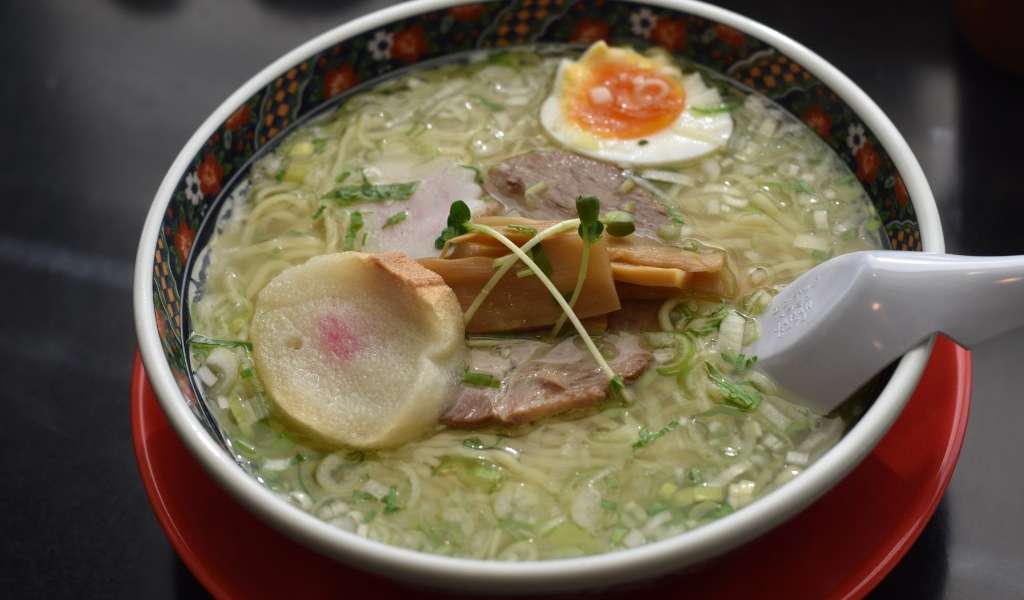
Shio ramen
What are the options for vegetarians, vegans or those that are gluten-free when it comes to enjoying ramen in Japan?
Ramen can be tricky for meat-free people because even with non-meat based soups, there's usually some dashi in there or some kind of seafood. That said, there are more and more veggie options becoming available. T's Tan Tan in Tokyo Station is a classic. The base of their ramen is sesame and the first time I had that, I thought it wouldn’t have the thick flavour that I love, but it does.
There's also teamLab's Vegan Ramen UZU in Toyosu, Tokyo which looks beautiful; it's like a work of art. There's one bowl where the soup is based on tea.
A lot of chains like Afuri and Soranoiro have a handful of vegetarian or vegan options at some of their stores. Soranoiro also offers some gluten-free options at some locations.

Sapporo ramen from Sumire Sapporo
Can you recommend any restaurants/ chefs doing interesting/ unique things with ramen in Japan?
Absolutely! In Tokyo, my top three recommendations are:
Menko Ushio : They have a ramen based on carbonara; it's creamy, garlicky and cheesy. They've adapted the flavour to ramen and it's so much better than I imagined. That bowl lives rent-free in my head.
Ginza Hachigo : I have to mention them. I haven't personally been yet, but they just got Michelin-starred. They use a stock made of chicken, duck, scallops and cured ham to make a broth that's like French consomme. I've heard so much about it from colleagues that have been. Like any popular restaurant, you'll have to line up to get in.
Ebimaru : Their thing is fusion. They make a decadent, giant bowl of ramen with a whole lobster in it and their soup is a lobster bisque soup. Once you eat that, if you're hungry and there's still soup left, they'll give you rice, you mix that into the soup, grate cheese on it, put an egg in there, and have lobster risotto. That's your second course.
Also, in Fukuoka, there's Butasoba Tsukiya . They're a chain and have stores in Tokyo too. They mix it up by having the classic tonkotsu but with a chintan clear base. You have the flavour of a tonkotsu, but it's much lighter. For garnish, they give you a little slice of shikuwasa (a citrus from Okinawa similar to a lime), and you just squeeze it on there. That's it, straightforward but delicious.

Shio ramen from Ryukyu Shinmen Tondou at Shin-Yokohama Raumen Museum
Can you tell us about the etiquette of visiting a ramen shop in Japan?
If you’re an international traveller people will understand that you might not know all the Japanese etiquette. That's not to say you can purposely act rude, but you don't have to stress out. Slurping is one topic that gets thrown around a lot and it's fine; it's not polite and not rude, it's just something you can do.
My main advice is when you have to queue, if you're with a group of people stay together, don't send your friend off to get snacks, because if you do go to a busy place and you say you need five chairs, but there's only one of you waiting, it’s rude (to the other customers waiting). When you get in, you'll be asked how many people are in your group; you can just hold up your fingers.
When you get inside, if there’s a ticket machine, use it to place your order before taking a seat. If you're waiting in a queue, that's the perfect time to look up the menu and choose what you want. If you're stuck, go with the store's recommendation, most stores have one - you're not going to be disappointed.
Because it is fast food and the shops are generally quite small, it's not like a cafe where you hang around and chit chat. You don't have to be completely silent but eat, focus on the food, and once you're done, head off. The rest is common sense, what you'd do to be a good citizen at a restaurant.
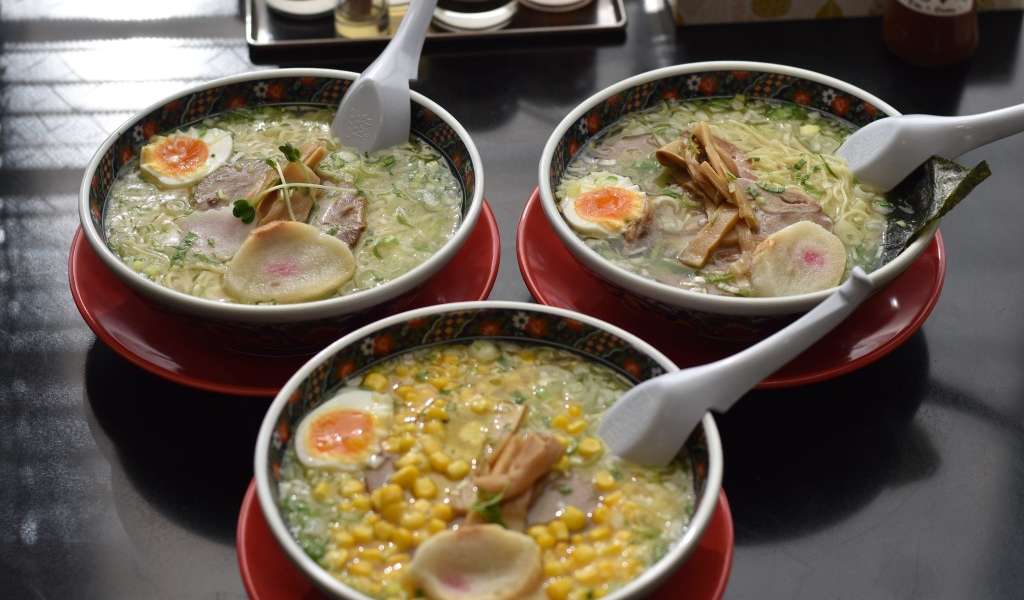
Miso, shio and Sapporo ramen
*If you love ramen, we'd also recommend you try other noodle dishes such as tsukemen (dipping noodles), mazesoba (a brothless bowl of mixed noodles) or chuka soba (a summer dish made with cold noodles and vegetables).
About Kit:
Kit Kriewaldt is an Australian journalist and the Deputy Editor (English) for Time Out Tokyo. An ex-resident of Berlin and now a Tokyo local, Kit first came to Japan in 2008, inspired by a long-running fascination with Japanese culture. A seasoned food and drink writer with a wealth of international experience writing about the culinary world, Kit describes himself as a 'ramen enthusiast’, rather than a master or an expert, but his clear passion for the dish and hunger (mind the pun) for discovering new creations is infectious.



















































